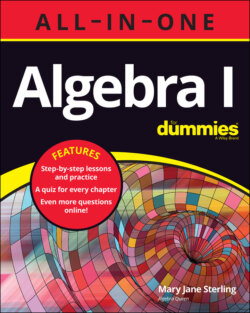Читать книгу Algebra I All-in-One For Dummies - Mary Jane Sterling, Mary Sterling Jane - Страница 89
Changing Fractions to Decimals and Vice Versa
ОглавлениеDecimals are nothing more than glorified fractions. Decimals are special because, when written as fractions, their denominators are always powers of 10 — for example, 10, 100, 1,000, and so on. Because decimals are such special fractions, you don’t even have to bother with the denominator part. Just write the numerator and use a decimal point to indicate that it’s really a fraction with a denominator that’s a power of 10.
The number of digits (decimal places) to the right of the decimal point in a number tells you the number of zeros in the power of 10 that is written in the denominator of the corresponding fraction.
Here are some examples of changing decimals to fractions:
Q. Change 0.408 to a fraction.
A. . The decimal has three digits, 408, to the right of the decimal point, so you use the power of 10 with three zeros.
Q. Change 60.00009 to a fraction.
A. . The decimal has five digits, 00009, to the right of the decimal point, so you’ll need 100,000 in the denominator. The 60 is written in front of the fraction and doesn’t affect the decimal value. The lead zeros are not written in front of the 9 in the numerator of the fraction. You start by writing the first nonzero digit.
A digit is any single number from 0 through 9. (But, when you count the ten digits at the end of your feet, you start with 1 and end with 10.)
Decimal fractions are great because you can add, subtract, multiply, and divide them so easily. The ease in computation (and typing) is why changing a fraction to a decimal is often desirable.
